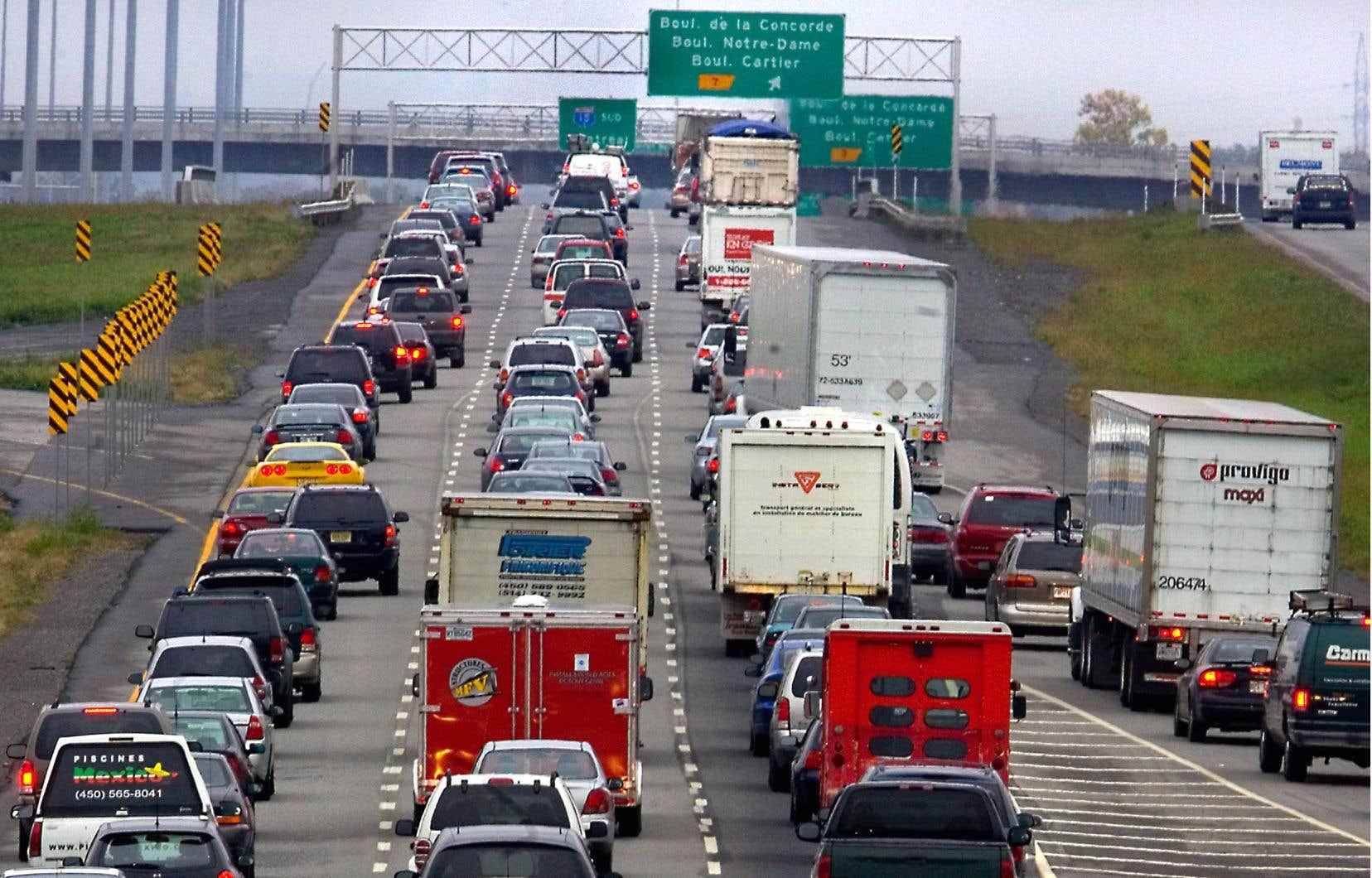The lack of frequency of buses and commuter trains, the sometimes high fares and the length of trips are among the obstacles to the use of public transit encountered by residents of Laval and its northern suburbs, for whom the car sometimes becomes a bright way out.
To get to work in Dollard-des-Ormeaux by public transit, Rabah Hachelaf, who lives in Sainte-Dorothée, in the west of Laval, must first take a bus from the Société de transport de Laval which will take him took a long detour east to the Bois-Franc train station in the Montreal borough of Saint-Laurent. From there, he boarded another bus, this time run by the Société de transport de Montréal, to get to his place of work, in the west of the island of Montreal.
“The journey takes an hour and 10 minutes when the conditions are optimal”, indicates the father of the family, in an interview with the To have to Wednesday. By car, he just needs to take Highway 13 to get to work in less than 20 minutes. “I take public transport when it is compulsory, for example when my wife takes the car,” explains Mr. Hachelaf, who specifies that the couple only has one car. “But at this point, we always think of buying another one. »
Further north, in the municipality of L’Assomption, Stéphanie Matteau long ago gave up the idea of getting to work by public transit. Every day, she takes her car at 3:50 a.m. to go no later than 6 a.m. to the site of the construction site of a major real estate development underway in Brossard, where she works.
Her two children for their part opted for a while for long bus and metro journeys to get to their classes, in Longueuil and Montreal, but they were often late due to the lack of frequency and reliability of the service. Free. “We ended up buying cars” for each of the two children, despite the vagaries of traffic congestion, says Ms. Matteau.
She also notes that the price of $184 per month that she would have to pay for each of her children if they continued to go to their lessons by public transport would not be competitive with the car, from a financial point of view.
“The North Shore is called upon to continue to develop in the automobile model”, thus decides the expert in transport planning and lecturer at the University of Montreal Pierre Barrieau. To reverse this trend, it calls for a significant improvement in the service offer and the frequency of public transit in this sector with a growing population.
Waiting for the REM
Rabah Hachelaf, for his part, is optimistic that the Metropolitan Express Network (REM), which led to the closure of the Sainte-Dorothée and Île-Bigras commuter train stations, “will solve the problem” of residents of the city. west of Laval Island by providing them with an efficient mode of public transportation. The entry into service of the light rail in the axis of the Deux-Montagnes line is not however planned before the end of the year 2024.
Meanwhile, Stefan Bracher, who lives in Deux-Montagnes, must take his troubles patiently. Due to the ongoing work on the Deux-Montagnes train line, he has been using bus alternatives for several years now to get to the Côte-Vertu metro station in Montreal.
“The bus is super comfortable, but we are also caught in traffic” on the portions of the route where reserved lanes have not been set up, notes Mr. Bracher. The latter also deplores the removal of terminals that allowed the purchase of tickets on the site of the Deux-Montagnes train station. You now have to go to a convenience store in the municipality of Laurentides to get your tickets, confirms by email the transport company exo.
“The easiest way is the car”, but “the congestion is hellish”, says Mr. Bracher, who now alternates between traveling by car and public transport to get to work, when it is impossible for him to work from home.
Less frequent trains
In Saint-Jérôme, all residents benefited from free local bus routes starting October 1, 2021. However, this measure only applies to residents aged 65 and over since November 1. The frequency of bus passage remains insufficient, according to several residents of this city of more than 80,000 inhabitants.
“We have situations where we have buses that pass by the hour in certain neighborhoods,” notes Marc-Olivier Neveu, who had tried his luck at the town hall of Saint-Jérôme last year. “We see that public transport services are inadequate to meet the needs of the population. »
Due to the sharp drop in ridership experienced with the onset of the COVID-19 pandemic, the transport organization exo had withdrawn certain scheduled departures on its various commuter train lines in March 2020 in order to reduce its operating costs. On the northern crown, two departures were then cut on the Saint-Jérôme train line and as many on the Mascouche one. The latter has since regained “all of her pre-pandemic departures” in August 2021, confirms exo. But reduced service remains in effect on the Saint-Jérôme line. The transport company ensures, however, that it retains the objective of returning to the schedule of this train line the departures which have been withdrawn there “when the traffic justifies it”.
However, “in general, when we cut service, we lose traffic. It’s a vicious circle that we don’t want to get out of,” says Trajectoire Québec’s Executive Director, Sarah V. Doyon, who is calling for better funding for public transit in the region. “We should correct that quickly because it could encourage people to opt for the car” instead of the train, apprehends Marc-Olivier Neveu.
